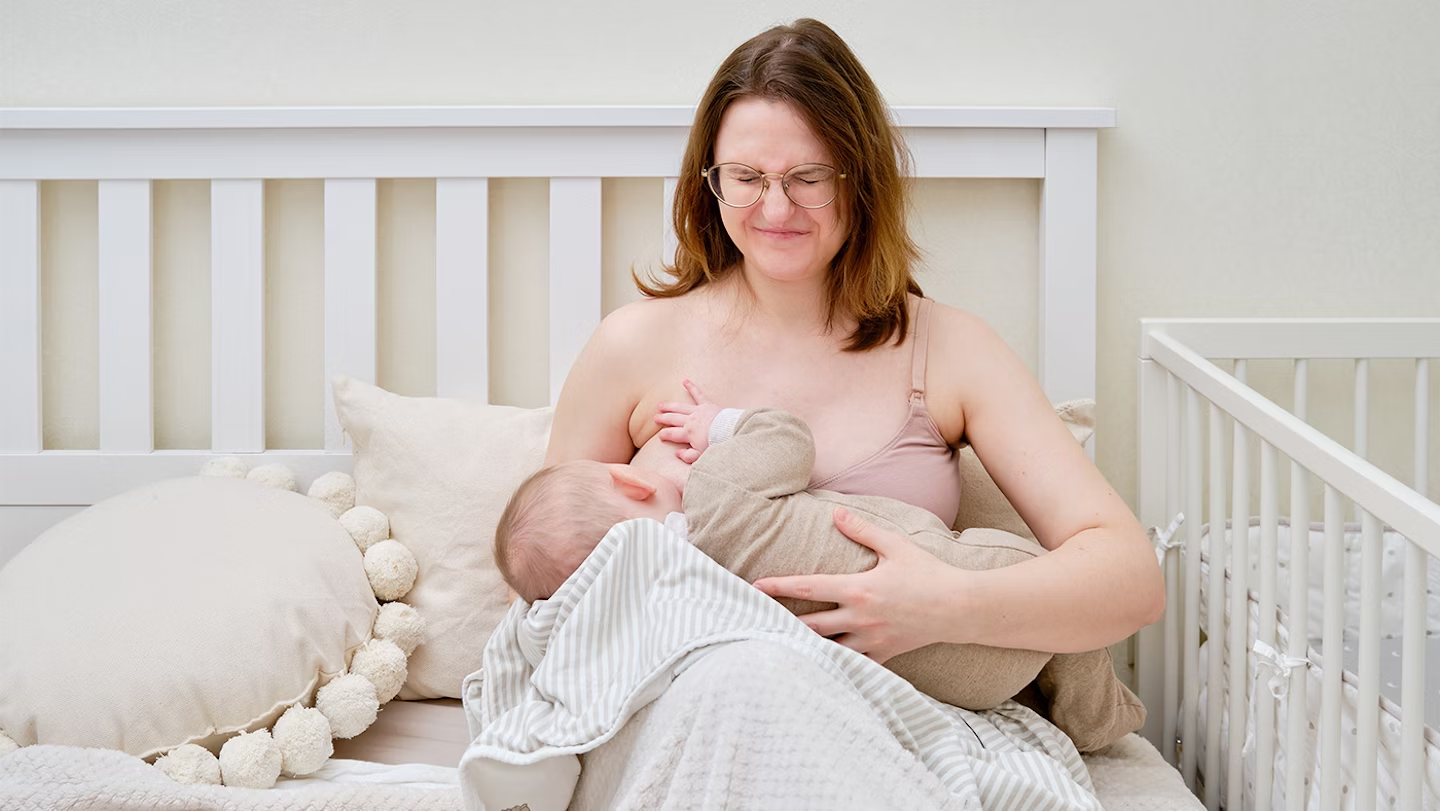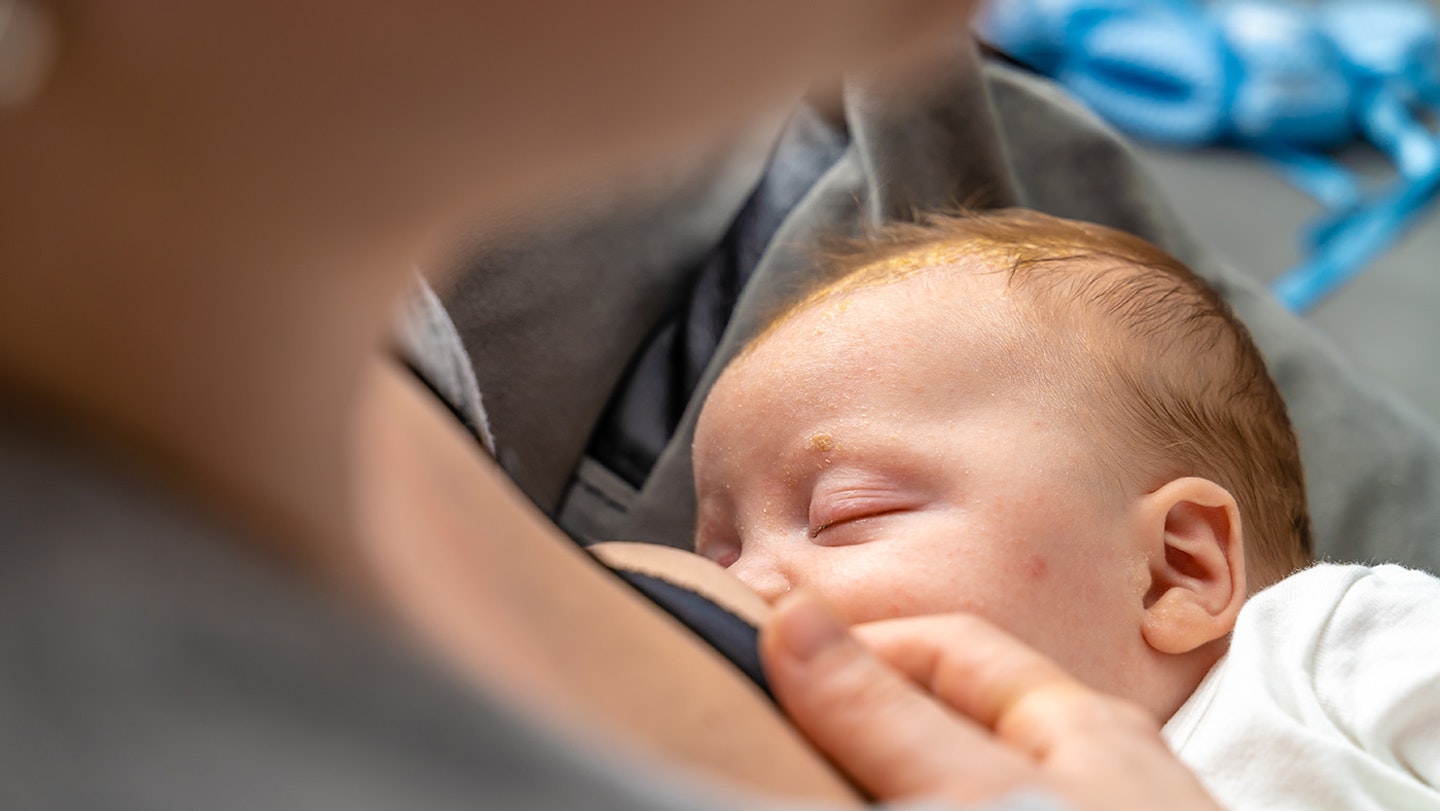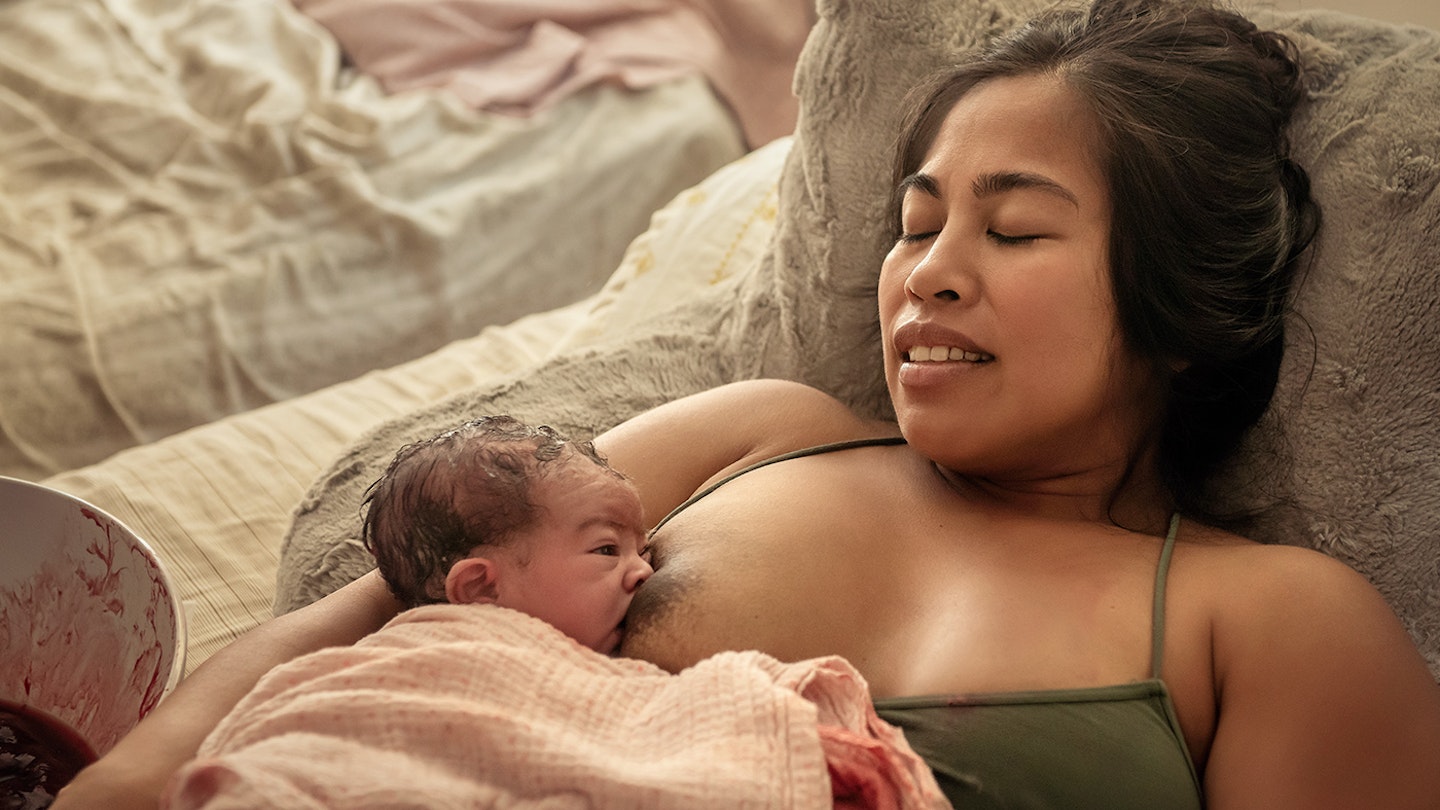For most women, breastfeeding pain is a common complaint when breastfeeding. While breastfeeding is brilliant for your baby, it isn’t so great for your nipples. The excessive tugging and suckling may have caused them to be sore and cracked, and possibly even bleed. We take a look at why this problem occurs and the best methods to soothe and heal your nipples.
Is it normal for nipples to be sore when breastfeeding?
According to the NHS, ‘sore nipples are most common about three to seven days into breastfeeding and usually happens because your baby isn’t positioned and attached effectively at the breast.’
If your baby is in the correct position and latched properly, breastfeeding shouldn’t be all that painful. There are plenty of different breastfeeding positions to try, so keep moving your baby until you find the right one for you.
What causes sore nipples when breastfeeding?
There are a few different reasons you might be experiencing sore nipples when breastfeeding.
The most common one is the latch. When your baby is correctly latched on, your nipple will rest against the soft palate at the back of your baby’s mouth. But if your baby isn’t properly latched, your nipple will be near the front of your baby’s mouth. This can cause pain and sore nipples, as your baby will pinch your nipple against the hard palate in their mouth as they try to feed. To help soothe your sore nipples, you may want to try a nipple cream for breastfeeding.
If you’ve just started breastfeeding, keep an eye on your nipples after the first few feeds – they will be a good indicator as to whether or not everything is ok. If you notice your nipples are flattened, wedged or white, your baby might not be properly attached.
Other common causes include:
• Chafing
• Thursh
• Adapting to the new experience

How to soothe sore nipples when breastfeeding
Get the position right
As we mentioned above, the right position can stop nipple pain. "Remember that your baby 'breast' feeds not 'nipple' feeds," explains breastfeeding expert Geraldine. "Your baby needs to scoop up some breast as well as your nipple. When your baby gapes widely, bring them onto the breast quickly, applying pressure to their upper back, so that your nipple flicks to the back of their mouth and is out of harm's way."
Reduce engorgement
Occurring when your boobs are too full of milk, while breast engorgement is unlikely to be the cause of your nipple pain, it can make it more difficult for your baby to latch on. Releasing milk before you nurse can help.
While in the shower, gently massage your breasts and allow the milk to drip out.
Relax your nipples
Simply apply a hot wet cloth - this will soften any dry skin and relax nipples before latching.
Change your bra
Wear a non-underwired cotton bra as this can help air circulate and avoid irritating sore skin. We recommend a maternity and nursing bra.
Apply your own milk
Hand express a little milk to massage into your nipple at the end of a feed. It's a great (free!) way to soothe any soreness as its anti-bacterial is a great healing agent.
Avoid using soap
Do not use soap when washing your breasts as it removes the natural oils on your skin and can dry out your nipples.
Go topless
Try air-drying your nipples after every feed. This obviously won't be an option if you're feeding on the go, but if you're at home, go topless and let your nipples dry naturally.
Choose the right breast pads
If you are using nursing pads, find pads without plastic backing. You should also change them after every feed.
Go natural
Geraldine recommends a few natural products that can calm nipple pain. "Manuka honey is a great natural treatment. Opt for the highest level of manuka activity and your nipples will heal quickly. If you do use Manuka, however, just remember to wash nipples well before latching baby onto the breast, as babies can't tolerate honey at all."
Organic olive oils are also widely recommended by mums suffering from sore nipples, however, you must check that the ingredients are safe for both you and your baby, and remove all oil before breastfeeding.
Another natural tool is the use of silver nipple cups which help your nipples recover from cuts and soreness thanks to silvers natural antibacterial properties.
Check your breast pump shield
If you're using a breast pump, the wrong-sized breast flange can result in your nipples becoming sore as well as how much milk you express.
If you find your nipple is rubbing the sides of the breast shield tunnel uncomfortably, that excessive areola is being pulled into the breast shield tunnel or you have redness on or at the base after or during pumping then you look at trying another breast pump shield size.

Should I keep breastfeeding with sore nipples?
Limiting or cutting down the amount of time spent breastfeeding because of sore nipples is not helpful. Firstly, your baby might not be getting enough milk, but it could also reduce your milk supply as your body will not get enough stimulation.
Instead, you should contact a lactation expert if you are having real difficulties getting your baby to latch, and try and soothe sore nipples.
When to seek help
It’s worth noting, whilst sore nipples are common, there are some conditions associated with breastfeeding that might require you to visit your GP. Thrush can be passed between your baby and your nipples and if this enters your milk ducts, you will experience a lot of pain once you’ve finished breastfeeding.
The symptoms of thrush in your nipples vary, but in general, having two or more of the following symptoms indicates the pain might be thrush:
• Burning nipple pain
• Flaking skin on the nipple or areola
• Shiny skin
• Painful breasts
• Stabbing pains in the breasts behind the areola
• Itchy nipples
If you are worried about thrush, it's a good idea to go to your GP to seek advice.
About the expert
Geraldine Miskin is an internationally recognised independent breastfeeding specialist, who has over 20 years’ of experience working with families through her private practice in West London, UK.
